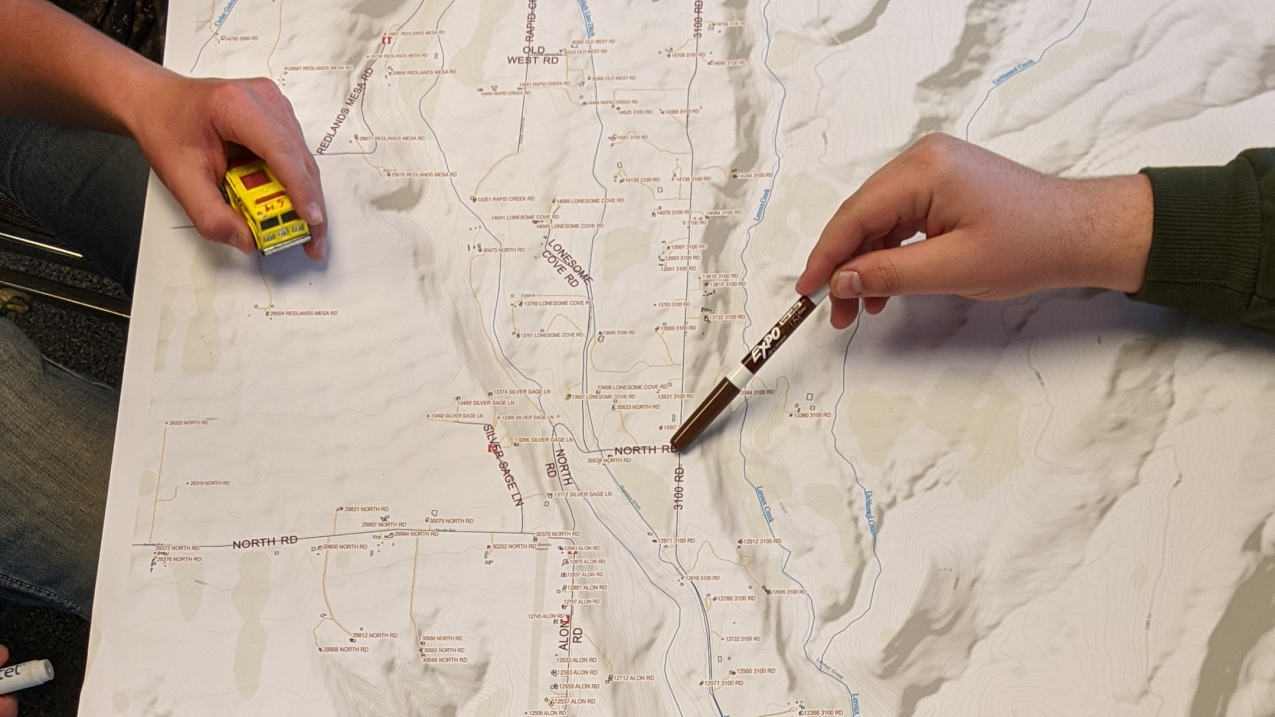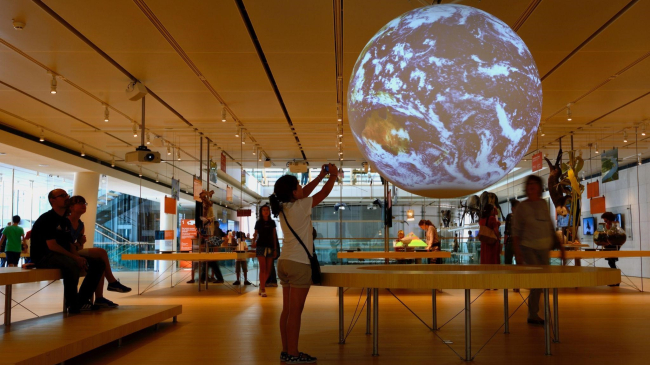The Redlands Mesa area outside Hotchkiss, Colorado, is particularly at risk to wildfires, but with funding from NOAA’s Environmental Literacy Program, local high school students are taking action to tackle their community’s vulnerability to this hazard.

Students map out how a wildfire might spread through Redland Mesa, Colorado, as part of a project funded by NOAA's Environmental Literacy Program. (Image credit: Katya Schloesser)
Droughts, heat waves, and wildfires are increasing in intensity and frequency across the western United States. In 2020, Colorado had a historic fire season, with the three largest fires by acreage in state history occurring in that year. Even places not normally susceptible to wildfires, such as the Boulder, Colorado area, have experienced extreme wildfire events recently. As a result, communities across the state are now evaluating their wildfire risk to a greater extent. The residential Redlands Mesa area is surrounded by Pinyon Juniper forest. With historically dry climate conditions, if the forest ignites, it would burn quickly with high flame lengths, resulting in very dangerous fire activity close to people's homes. The main access road to Redlands Mesa also runs through a narrow point in a valley, making it difficult to evacuate quickly. Neighbors are spread out and do not necessarily know one another, and paired with low enrollment in the local emergency notification system, neighborhood residents are at high risk should a fire occur.
With the support of educators at the University of Colorado Boulder, Hotchkiss High School students decided to take action. In partnership with Michael Muñoz, a geophysical science teacher at the school, the Cooperative Institute for Research in Environmental Sciences (CIRES) HEART Force offsite link project team worked with the local fire department to support the high school students in their efforts using funding from NOAA’s Environmental Literacy Program. Nineteen freshmen learned about wildfires, visited the local fire station, and then played a wildfire scenario-based role-play game with local firefighters as part of their geophysical science course. Through playing the wildfire game, students identified potential strategies to increase awareness in Redlands Mesa about wildfire risk and to increase the number of residents enrolled in the emergency notification system.
“The firefighters’ enthusiasm after participating in the game ‘stoked the fire’ and made the students feel like they could be changemakers,” said Muñoz. Fueled by the enthusiasm of the firefighters, three Hotchkiss High School students put together a written proposal and a video for the Colorado-wide RISE Challenge offsite link about these efforts, culminating in a first place win. The students are now busy putting the plans they created during the wildfire game into action, with a Community Resilience Expo event scheduled for spring 2022. The students will educate residents of Redlands Mesa about wildfire risks, use the wildfire game to help identify the shareable resources residents already have available, and enroll residents in the local emergency notification service.



